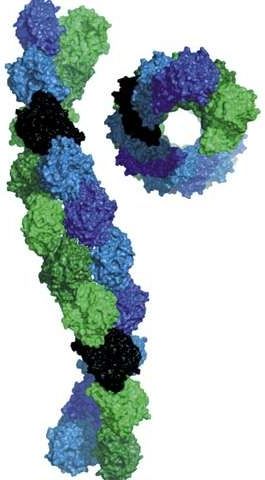Perfecting Synthetic biology — this definitely is advancement forward in the larger Singularity story.
In both higher organisms and bacteria, DNA must be segregated when cells divide, ensuring that the requisite share of duplicated DNA goes into each new cell. While previous studies indicated that bacteria and higher organisms use quite different systems to perform this task, A*STAR researchers have now found a bacterium that uses filaments with key similarities to those in multicellular organisms, including humans.
Robert Robinson from the A*STAR Institute of Molecular and Cell Biology has a long-standing interest in what he calls the “biological machines” that move DNA around when cells divide. He and his co-workers had gleaned from gene sequencing analysis that there was something distinctive about the DNA-moving machinery in the bacterium Bacillus thuringiensis.
Along with an international team of colleagues, the A*STAR researchers used electron microscopy and biochemical analysis to investigate the way small circular strands of DNA called plasmids moved in this bacterium. They identified a novel form of bacterial filament that combines to form tubules with some similarities to the microtubules observed in higher organisms. Bacterial systems previously studied also use protein filaments to move DNA, but they do not share such obvious similarities to those of higher organisms. The new-found similarity in Bacillus thuringiensis is of great interest from an evolutionary perspective as it suggests that evolution has furnished at least some bacteria and multicellular organisms with different machineries but similar methods to manipulate DNA.










Comments are closed.